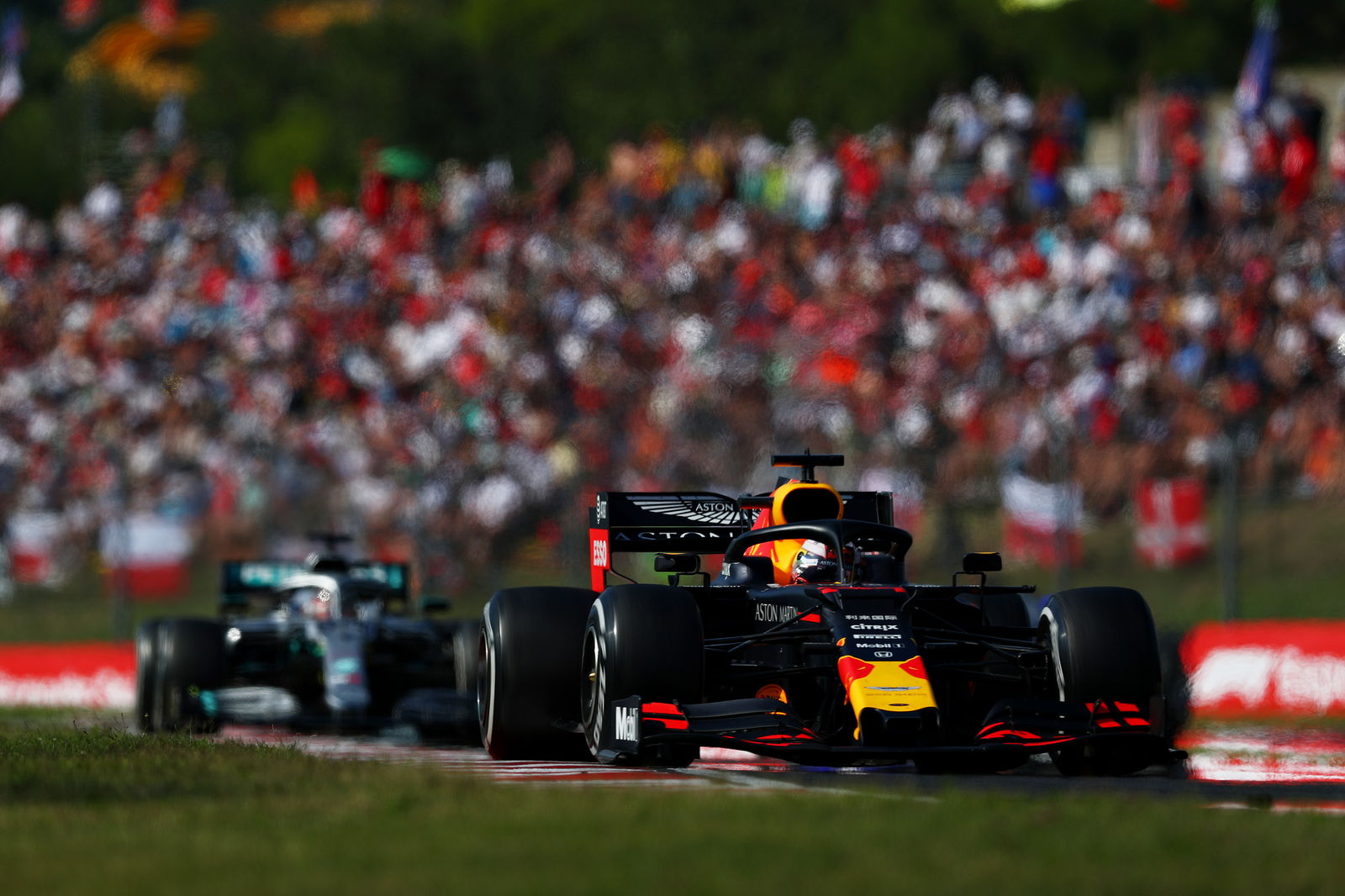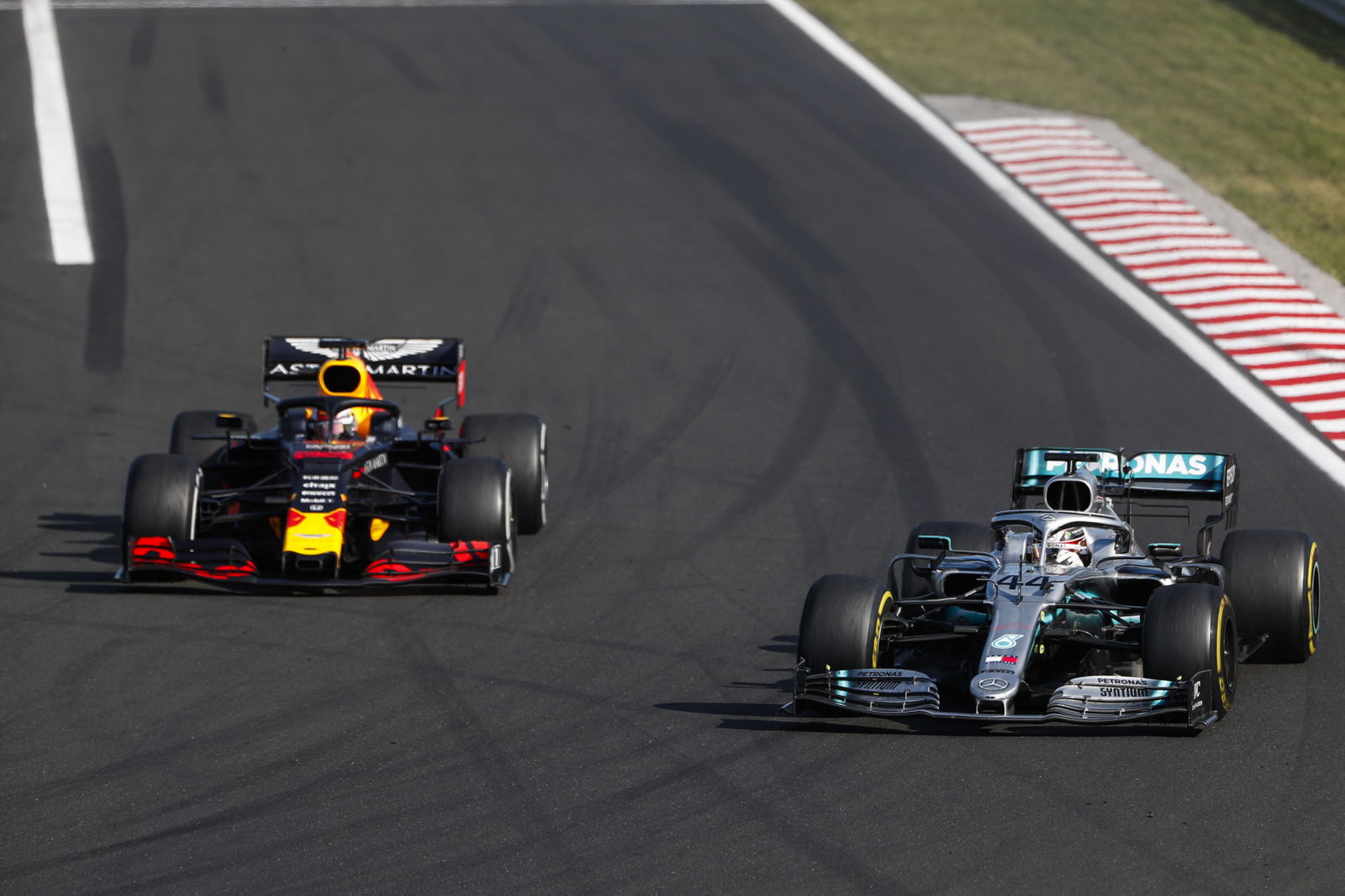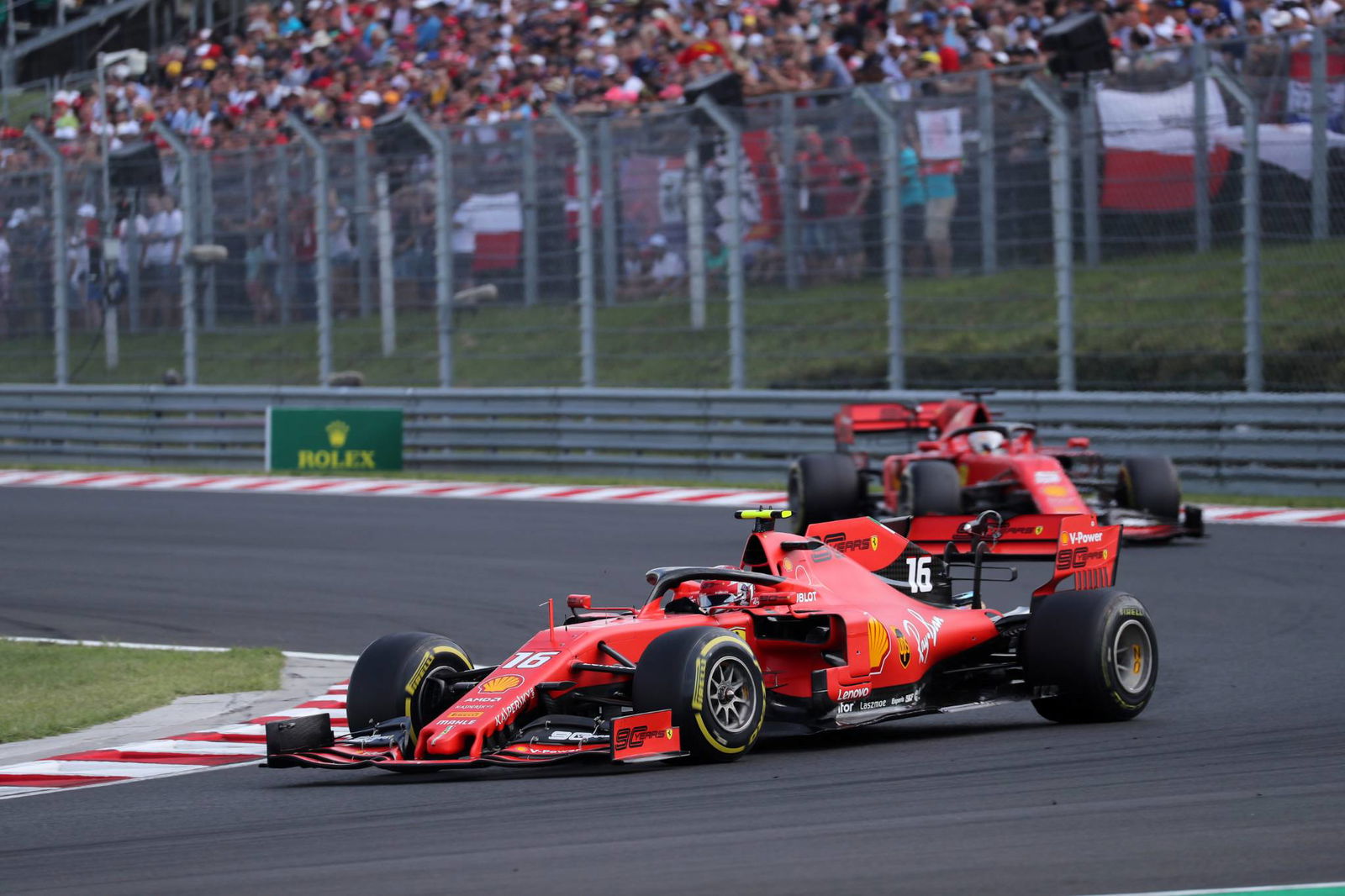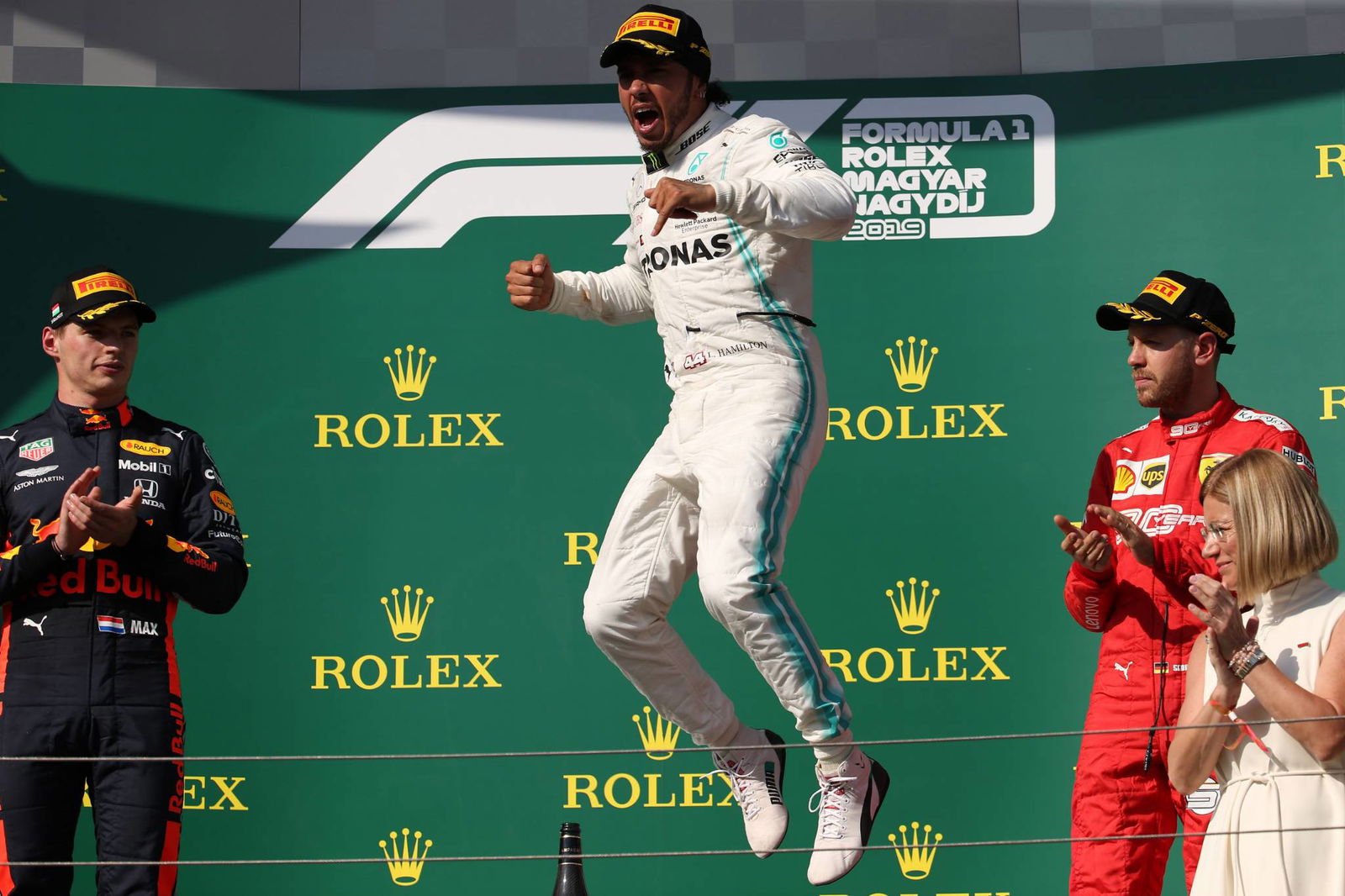F1 Race Analysis: How Hamilton made Mercedes’ strategy gamble work
Victory in Sunday’s Hungarian Grand Prix “felt like a first” to Lewis Hamilton, such was the five-time world champion’s glee at fighting back from running 20 seconds in arrears with 20 laps to go to win the race in remarkable fashion.
The call that ultimately sent Hamilton on his way to victory at the Hungaroring was so radical that Mercedes had ruled it out in during the pre-race discussions, convinced a two-stop strategy would prove so much slower that it was not even worth considering.

Victory in Sunday’s Hungarian Grand Prix “felt like a first” to Lewis Hamilton, such was the five-time world champion’s glee at fighting back from running 20 seconds in arrears with 20 laps to go to win the race in remarkable fashion.
The call that ultimately sent Hamilton on his way to victory at the Hungaroring was so radical that Mercedes had ruled it out in during the pre-race discussions, convinced a two-stop strategy would prove so much slower that it was not even worth considering.
And yet the stars aligned for Hamilton and Mercedes to pull it off, proving again why they are the standard the rest of the grid must aspire to match.
Max Verstappen’s form throughout the weekend made clear to Mercedes that it would not be an easy fight at the head of the pack, particularly if its drivers failed to get the jump on the run to the first corner, such is the difficulty of overtaking at the Hungaroring. Verstappen bucked his recent trend by making a superb getaway, leaving Hamilton and Mercedes teammate Valtteri Bottas to scrap for P2.
Hamilton eventually got ahead after Bottas locked up twice, albeit not without a glace of the Finn’s front wing exiting Turn 3. A bigger clout for Bottas came from Charles Leclerc’s Ferrari, causing damage that would ultimately condemn him to a lowly P8 finish.
The loss of Bottas at the front complicated matters for Mercedes. Its hopes of tag-teaming Verstappen and using its strength in numbers – hinted at on Saturday after qualifying – were dashed, leaving Hamilton to take the fight to Verstappen alone.
And he did. With Ferrari running a second a lap slower behind, Verstappen and Hamilton ran unchallenged at the front. Hamilton managed his tyres well through the opening stages, the gap to Verstappen remaining stable at around two seconds for the first 15 laps. He then began to up his pace and put pressure on Verstappen, edging towards DRS range.
Verstappen had been looking for a gap to drop into, which only arrived on Lap 25 as he found enough room to the Ferraris in third and fourth. Red Bull brought him in immediately, covering off a possible undercut from Hamilton – but it meant his Hard tyres would have to last 45 laps to the chequered flag.
Hamilton reported to Mercedes that he was feeling pretty good on his tyres, prompting the team to stretch his stint out. While Verstappen’s fresh Hards would allow him to whittle the gap down at the front, Hamilton would gain the advantage back once he pitted and the delta returned in his favour.
Verstappen gained only 2.3 seconds between pitting and Hamilton coming in at the end of Lap 31, meaning that even with a slow stop, the Mercedes driver emerged from the pits around five seconds off the lead – and that quickly evaporated. Verstappen’s struggles in the early part of the stint combined with Hamilton’s immediate pace on the fresh Hards saw the gap fall to less than a second in the space of just two laps.
But the pace did not mean Hamilton could breeze past Verstappen. As the pair scythed through traffic, Verstappen made his car as wide as possible. Hamilton ran deep at Turn 2 on Lap 36 before his closest attempt came on Lap 39, with a series of switchbacks giving him a run up the hill to Turn 4 where he ambitiously tried swinging his car around the outside of the corner. Hamilton proceeded to run out wide, ending his charge.
Knowing these tyres would have to carry him to the end and managing some brake concerns, Hamilton eased off to sit around two seconds back from Verstappen. It was in this moment the Mercedes pit wall worked its magic, telling Hamilton it would be switching onto a two-stop strategy.
“I couldn't compute how that was going to work if I'm really honest,” Hamilton admitted after the race. “I thought I could make my tyres go to the end, the Hards, so I knew that he would be able to do the same thing. If it hadn't worked out, it would have been really frustrating, because it felt like when I was behind him on the Hards, I thought that I would have multiple opportunities to get by.”
That’s what it looked like at first when Hamilton closed on Verstappen: another chance to get by. Race engineer Pete Bonnington told him to get as close to the Red Bull as possible, seeming to state the obvious – but with the hindsight of knowing it was a two-stop strategy, this was the real genius of the gamble.

Mercedes forced Red Bull into a corner with this strategy call. Hamilton got close enough to Verstappen that when he surprised everyone by diving into the pits at the end of Lap 48, he would have easily got the undercut. Red Bull had no choice but to keep Verstappen out and hope he could hang on to the end with his fading tyres.
At one point, it looked like Verstappen would easily manage it. Hamilton had 20 seconds to make up in 20 laps, but hit a wall around Lap 52 when the gap stabilised. Verstappen had been given the nod from Red Bull to up his engine mode, while Hamilton was being hamstrung by lapped cars, meaning he was making up mere tenths each lap on the leader and not the seconds he needed to gain. In the five laps from Lap 52 to Lap 56, Hamilton made up just five-tenths of a second. It looked like it was game over.
Then came the break that Hamilton needed. The pocket of clean air that had helped Verstappen run a strong pace on worn tyres also became Hamilton’s territory on Lap 57, sparking the beginning of his charge. With no cars on-track between him and Verstappen, Hamilton was able to hook up qualifying laps in metronomic fashion. He did eight consecutive laps in the mid-1m18s range – Verstappen meanwhile was running in the high-1m19s at best, fading to 1m21s – to demolish the gap by as much as 2.3 seconds per lap.
By the time Hamilton latched onto the rear of Verstappen’s car in the closing stages of Lap 66, there was little the Dutchman could do to hold on to the lead. He placed his car well at Turn 1, sitting in the middle of the track and running a bit deep, but there was still enough room for Hamilton get a better exit, spurt out of the corner and move into the lead.

It was a remarkable fightback from Hamilton, who was quick to thank strategy guru James Vowles after the race. Fitting, Vowles was given the honour of joining Hamilton up on the podium as Mercedes’ team representative.
“Honestly I didn’t know if I could catch that 19-second gap,” Hamilton said. “My tyres were going to drop off and all these different things are going through your mind. But like the team said, you just keep your head down, so I did and kept pushing and pushing and the gap closed and closed and closed. The laps were like qualifying laps every lap.
“It felt like the steepest wall to climb when you come out that far behind, but the team had relaxed faith that we would do it, and I’m grateful for their hard work and the decision.”
The Hamilton-Mercedes juggernaut continues to reach new heights in 2019. As devastatingly dominant as they have been at points this year, today was the canniest and perhaps the hardest-earned victory of the lot.

